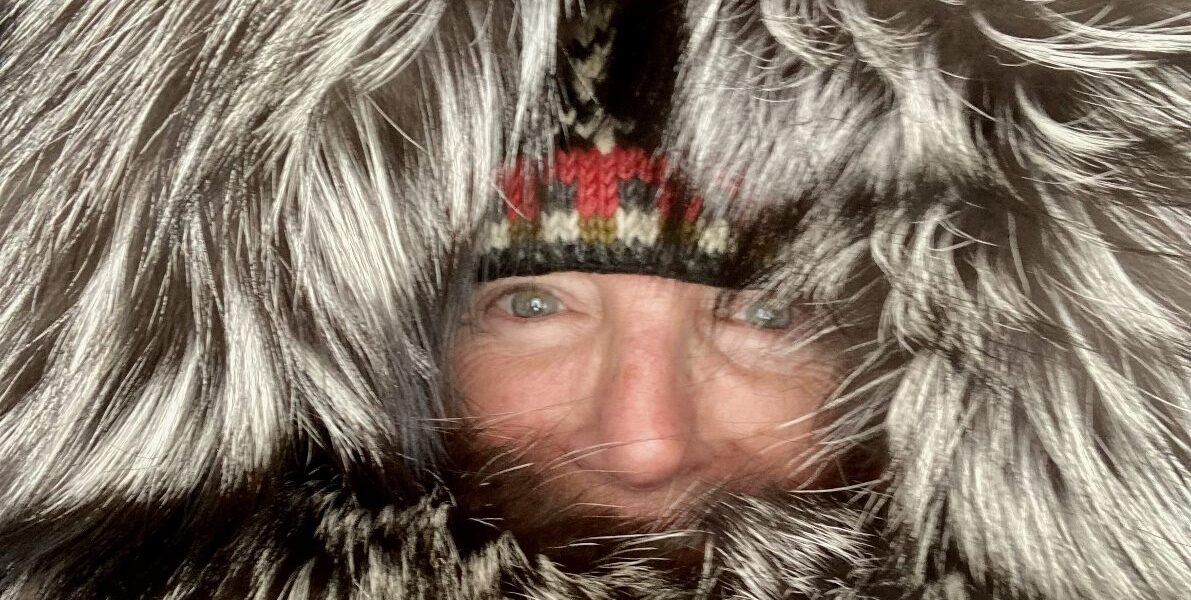Trail Time – The Silence of Winter
The winter solstice is upon us. For us in the north, the earth has reached its maximum tilt away from the sun. It now will start tilting toward the sun and we’ll see more hours of daylight. Solstice time is marked on the Trail with a profound winter silence, stillness and deep cold. Our thermometer read almost 23 below zero this morning, the coldest it’s been since last February, when it was 33 below. Last week the giant moon ascended into a rose-pink sky. This morning the day dawned in pale jewel colors. Tonight the stars will blaze in the dark cold night, seemingly closer to earth than in the summer.
With the deep snow and colder temps, we’ve haven’t seen much wildlife around. Some days, the only sign of life is prints in the snow. There’s been a fox making the rounds and I think he still hunkers down under our woodshed on occasion. The last time our dog saw the fox, she was on him quick as anything. There was no barking, growling or biting, the fox flopped onto his back in submission and that was that. I checked my dog Ursa thoroughly when we got home — no harm done, no injuries. But it was a weird little encounter. Now when we walk by the woodshed, Ursa whines and moans a little, looking again for a little foxy excitement.
Chickadees are flocking to our feeders by the score. We fill them almost twice a day. I swear the tiny birds perch where they can stare into our windows when they want more seed. A neighbor was telling me about how these tiny birds survive the winter, and I did some more research and discovered that the tiny chickadees have amazing adaptations for the cold.
One thing they do is store food all autumn: chiefly insect eggs and seeds. Like gray jays and ravens, they cache food in a variety of places.
And they excavate little holes — the size of a quarter — to dive into at the end of a winter day, especially in birch trees. They utilize abandoned woodpecker cavities as well.
Chickadees have to eat 10-60% their body weight every day to survive the long cold nights. To conserve their stored fat, the enter a state of regulated hypothermia, their temperature dropping 12 to 15 degrees below their normal daytime temperature. This slows their metabolism and then they use the fat reserves to shiver all night, keeping warm in their little hidey holes.
Into this cold stillness and silence comes the winter song of the lake. The ice groans and roars, sometimes sounding like a lonely distant whale, sometimes sounding like someone shaking a large piece of sheet metal, just once, followed but a noise that sounds like a far-off jet on a flight that lasts two seconds.
I break the quiet with a song that I sing to a tree, adapted from an old favorite: O Tanenbaum. The original lyrics go like this:
O Tanenbaum,
O Tanenbaum,
How lovely are your branches
(X 2)
Verse:
Not only green in summer’s heat
But also winter’s snow and sleet
Here are my alternate verses, which honor the tree for more than just its beauty. I honor the tree’s usefulness to other creatures and I also honor its Otherness:
O Christmas tree,
O Christmas tree,
How lovely are your branches,
X2
You use your roots to talk to trees
You even make pollen for bees
You have no eyes you have no heart
But best of all you never fart
You’re never thin and never fat
I wonder if you’d like a hat
You’re such a lovely shade of green
If I were King you’d be my queen
You never yell or lie to friends
You never have to make amends
Do you like wine do you like beer
Do you even know I’m here
You listen well, you seldom speak
When wind doth blow you kinda squeak
You have a place where birds can nest
I wonder if you mind their mess
You don’t eat bread you don’t eat meat
Do you prefer salty or sweet?
You’re never mean or cross with me
I wish I was your little tree
O Christmas tree
O Christmas tree
How lovely are your branches











